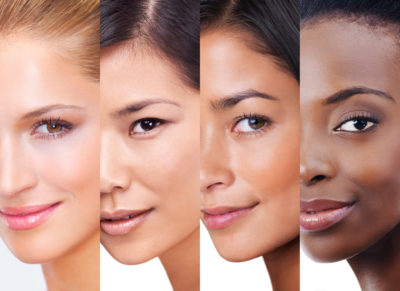Protect your Skin and Eyes from UV Damage
The ‘When, Where, and How’ of Sun Protection
Ultraviolet (UV) radiation is a type of energy the comes from the sun and some artificial sources such as tanning beds. UV radiation is the main cause of skin cancer and also causes sunburn and eye damage.
UV and Your Skin
 The skin is the body’s largest organ. It protects against heat, sunlight, injury, and infection. Yet, some of us don’t consider the necessity of protecting our skin.
The skin is the body’s largest organ. It protects against heat, sunlight, injury, and infection. Yet, some of us don’t consider the necessity of protecting our skin.
It’s just smart to take good care of your skin.
The need to protect your skin from the sun has become obvious over the years, supported by several studies linking overexposure to the sun with skin cancer. In addition, the harmful ultraviolet rays from both the sun and indoor tanning “sunlamps” can cause many other complications besides skin cancer – such as eye problems, a weakened immune system, age spots, wrinkles, and leathery skin.
How to Protect your Skin
Simple, everyday steps you can take to safeguard your skin from the harmful effects of UV radiation from the sun.
- Wear Proper Clothing
Wearing clothing that will protect your skin from harmful ultraviolet (UV) rays is vital. Protective clothing such as long-sleeved shirts and pants are good examples. Also, remember to protect your head and eyes with a hat and UV-resistant sunglasses. You can fall victim to sun damage on a cloudy day and in the winter, so dress accordingly all year round. - Avoid the Burn
Sunburns significantly increase one’s lifetime risk of developing skin cancer. Therefore, children must be kept from sunburns as well. - Go for the Shade
Stay out of the sun, if possible, between the peak burning hours, which, according to the Centers for Disease Control and Prevention (CDC) and the World Health Organization (WHO), are between 10 a.m. and 4 p.m. Then, you can head for the shade, or make your own shade with protective clothing – including a broad-brimmed hat, for example. - Use Extra Caution Near Reflective Surfaces (ex: Water, Snow and Sand)
Water, snow, sand, and even the windows of a building can reflect the sun’s damaging rays. That can increase your chance of sunburn, even if you’re in what you consider a shady spot. - Use Caution at Higher Altitudes
You can experience more UV exposure at higher altitudes because there is less atmosphere to absorb UV radiation. - Apply Broad-Spectrum Sunscreen
Generously apply a broad-spectrum sunscreen to cover all exposed skin. The “broad spectrum” variety protects against overexposure to ultraviolet A (UVA) and ultraviolet B (UVB) rays. The FDA recommends using sunscreens that are not only broad-spectrum but that also have a sun protection factor (SPF) value of at least 15 for protection against sun-induced skin problems. - Re-Apply Broad-Spectrum Sunscreen
Even if a sunscreen is labeled as “water-resistant,” it must be reapplied throughout the day, especially after sweating or swimming. To be safe, apply sunscreen at a rate of one ounce every two hours. Depending on how much of the body needs coverage, a full-day (six-hour) outing could require one whole tube of sunscreen.
When to Protect your Skin
UV rays are their strongest from 10 a.m. to 4 p.m. Seek shade during those times to ensure the least amount of harmful UV radiation exposure. When applying sunscreen, be sure to reapply to all exposed skin for at least 20 minutes before going outside. Reapply sunscreen every two hours, even on cloudy days and after swimming or sweating.
Protect Your Eyes
UV rays can also penetrate the structures of your eyes and cause cell damage. According to the CDC, some of the more common sun-related vision problems include cataracts, macular degeneration, and pterygium (non-cancerous growth of the conjunctiva that can obstruct vision).
- Wear a Wide Brimmed Hat
To protect your vision, wear a wide-brimmed hat that keeps your face and eyes shaded from the sun at most angles. - Wear Wrap-Around Sunglass with 99 or Higher UV Block
Effective sunglasses should block glare, block 99 to 100% of UV rays, and have a wraparound shape to protect eyes from most angles.
Using the UV index
When planning your outdoor activities, you can decide how much sun protection you need by checking the Environmental Protection Agency’s (EPA) UV index. The UV Index is an international standard measurement of the strength of sunburn-producing ultraviolet radiation at a particular place. This index measures the daily intensity of UV rays from the sun on a scale of 1 to 11. A low UV index requires the minimal protection, whereas a high UV index requires maximum protection.
About Dermatology at Boulder Medical Center
The Dermatology Department at Boulder Medical Center addresses the prevention and treatment of skin, hair, and nail disorders for adults and children. Our caring group of providers treats a full range of skin-related problems, including medical, surgical, and cosmetic concerns. For more information about our Dermatology team and the services we provide, visit the Dermatology department page.

